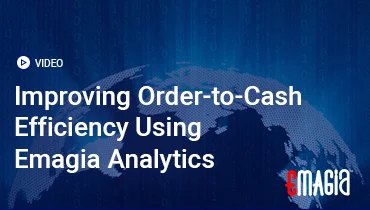In the relentless pursuit of financial health, every business understands that making a sale is only half the battle. The true victory lies in converting that sale into tangible cash. This crucial process falls squarely on the shoulders of Accounts Receivable (AR) and collections teams. Yet, for many organizations, managing overdue payments can feel like a constant uphill struggle, often characterized by manual follow-ups, fragmented information, and inconsistent communication with customers. These inefficiencies directly translate into delayed cash flow, inflated Days Sales Outstanding (DSO), and, perhaps most critically, strained customer relationships.
Traditionally, collections have been a reactive and labor-intensive function, relying heavily on human effort to chase down every outstanding invoice. This approach is not only costly and inefficient but also fails to leverage the wealth of data available within a business. However, a significant transformation is sweeping across the financial landscape, driven by the increasing demand for automation and intelligent insights. Businesses are discovering the immense power of dedicated collection software systems to revolutionize their approach to overdue payments.
This comprehensive guide will delve deep into how collection software systems integrate into business operations, exploring the critical connections that transform a reactive collections function into a proactive, strategic powerhouse. We will uncover how seamless integration with core business platforms like ERP, CRM, and payment gateways accelerates cash flow, enhances operational efficiency, improves customer satisfaction, and ultimately positions your finance function for the demands of next generation finance. Join us as we illuminate the intricate web of integration that makes modern collections truly intelligent and impactful.
I. The Persistent Challenge of Collections in Modern Business
Before exploring integration, let’s understand why collections are such a pain point for many organizations.
A. The Burden of Manual Collections: Inefficiencies and Limitations
For many businesses, the collections process remains surprisingly manual, leading to a host of inefficiencies:
- Time-Consuming Manual Follow-ups: Collectors spend countless hours manually reviewing aging reports, drafting emails, making phone calls, and tracking interactions.
- Fragmented Information: Customer payment history, communication logs, and dispute details are often scattered across multiple spreadsheets, email inboxes, and disparate systems, making a holistic view impossible.
- Inconsistent Communication: Without standardized workflows, collection efforts can be inconsistent, leading to varied customer experiences and potentially damaging relationships.
- Lack of Prioritization: It’s difficult to identify which accounts are most at risk or most likely to pay, leading to a “spray and pray” approach rather than targeted efforts.
- Human Error: Manual data entry and tracking are prone to mistakes, leading to misapplied payments or incorrect follow-ups.
These challenges highlight the limitations of a purely manual accounts receivable collections process.
B. The Detrimental Impact of Inefficient Collections on Business Health
The consequences of a struggling collections function are far-reaching:
- Delayed Cash Flow: Every day an invoice remains unpaid means cash is tied up, impacting liquidity and hindering a company’s ability to pay its own bills, invest in growth, or seize opportunities.
- Inflated Days Sales Outstanding (DSO): A high DSO indicates that it takes longer to collect payments, artificially inflating Accounts Receivable balances and misrepresenting true financial health.
- Increased Operational Costs: The labor, administrative overhead, and potential late fees associated with inefficient collections directly impact profitability.
- Damaged Customer Relationships: Inconsistent, aggressive, or misinformed collection efforts can alienate valuable customers, leading to churn and reputational damage.
- Higher Bad Debt Write-offs: The longer an invoice remains outstanding, the higher the probability of it becoming uncollectible.
These impacts underscore the critical need for a more strategic and automated approach to collections, which collection software systems aim to provide.
II. What is a Collection Software System? An Overview
Let’s define these powerful tools that are transforming Accounts Receivable.
A. Defining a Collection Software System: Beyond Basic Reminders
A collection software system (also known as collections management software, AR collections software, or debt collection software) is a specialized software application designed to automate, streamline, and optimize the process of collecting overdue payments from customers. It goes far beyond simply sending automated reminders, offering comprehensive tools for managing customer accounts, orchestrating communication, tracking progress, and providing insights into collection effectiveness. It is a dedicated accounts receivable collections software solution.
B. Evolution: From Manual Dunning to Intelligent Automation
The evolution of collection software systems mirrors the broader digital transformation in finance. Early tools offered basic dunning letter automation. Modern systems, however, leverage advanced technologies like Artificial Intelligence (AI) and Machine Learning (ML) to provide predictive analytics, intelligent communication, and seamless integration, making them truly automated collections systems.
C. Core Functionalities of Modern Collections Management Software
Key capabilities typically include:
- Automated Dunning & Reminders: Scheduling and sending personalized payment reminders via email, SMS, and customer portals.
- Collections Workflows: Defining and automating sequences of actions based on invoice aging, customer segments, and payment behavior.
- Customer Segmentation: Grouping customers for targeted communication and strategy.
- Communication Tracking: Centralized logging of all interactions with customers regarding payments.
- Dispute Management: Tools to track, categorize, and route customer disputes for resolution.
- Reporting & Analytics: Dashboards and reports on collection effectiveness, aging, and DSO.
- Payment Portal Integration: Enabling customers to make payments directly from reminders or portals.
These functionalities are what make a collection software system so valuable.
III. How Do Collection Software Systems Integrate into Business Operations? The Critical Connection Points
The true power of collection software systems lies in their seamless integration with other core business platforms. This interconnectedness allows for a unified approach to the Order-to-Cash (O2C) cycle, ensuring data flows freely and processes are aligned.
A. Integration with ERP/Accounting Systems: The Foundational Data Hub
This is arguably the most critical integration point. The ERP (Enterprise Resource Planning) or core accounting system (e.g., SAP, Oracle, NetSuite, QuickBooks) holds the authoritative record of all financial transactions, including invoices, payments, and customer master data. Collection software systems integrate with these platforms to:
- Automated Data Synchronization: Pull open invoice data, customer details, payment terms, and historical payment behavior directly from the ERP in real-time or near real-time. This ensures collectors are always working with the most up-to-date information.
- Real-time Accounts Receivable (AR) Updates: Once a payment is collected or a dispute is resolved within the collections software, it automatically updates the corresponding invoice status in the ERP’s AR ledger. This eliminates manual data entry and ensures the ERP remains the “single source of truth.”
- General Ledger Integration: Ensure that collection activities and any associated adjustments (e.g., write-offs, credit memos) are correctly reflected in the General Ledger.
- Eliminating Data Silos: Prevents collections teams from working with outdated or incomplete information, which can lead to chasing already-paid invoices or mismanaging customer relationships.
This deep integration is fundamental to how collection software systems integrate into business operations effectively.
B. Integration with CRM Systems: Enhancing Customer Context and Communication
The Customer Relationship Management (CRM) system (e.g., Salesforce, HubSpot) holds vital information about customer interactions, sales history, and relationship health. Integrating collection software systems with CRM provides invaluable context for collectors:
- Unified Customer View: Collectors can see recent sales activities, customer service interactions, and any ongoing issues (e.g., product complaints) directly within the collections platform. This prevents collectors from making calls that might contradict ongoing sales efforts or customer support resolutions.
- Personalized Communication Strategies: Leveraging CRM data, collectors can tailor their outreach based on customer segments, historical communication preferences, and relationship status, leading to more empathetic and effective interactions.
- Sales and Collections Alignment: Ensures that sales teams are aware of any outstanding balances or collection issues before engaging with customers on new deals, fostering better internal collaboration.
- Automated Activity Logging: All collection-related communications and activities are automatically logged in the CRM, providing a comprehensive history for all customer-facing teams.
This integration ensures that accounts receivable collections software supports a customer-centric approach.
C. Integration with Payment Gateways & Cash Application: Closing the Payment Loop
The ultimate goal of collections is to receive payment. Integrating with payment systems and cash application processes is crucial:
- Facilitating Online Payments: Collection software can embed secure payment links directly into reminders or customer portals, allowing clients to pay instantly via credit card, ACH, or other digital methods.
- Automated Cash Application: Once a payment is made, the collection software system can feed this information directly to the cash application module (either within the ERP or a dedicated AR automation solution), ensuring the payment is matched and applied to the correct invoice(s) promptly. This is critical for reducing “unapplied cash” and accelerating cash recognition.
- Real-time Payment Status Updates: Provides immediate confirmation of payment receipt, allowing collectors to stop follow-ups on paid invoices and focus on truly overdue accounts.
This seamless flow from collection effort to cash recognition is a hallmark of an automated collections system.
D. Integration with Credit Management Systems: Proactive Risk Mitigation
Effective collections are often a result of good credit management. Integrating these two functions creates a powerful proactive defense against bad debt:
- Shared Credit Risk Profiles: Collections software can access customer credit risk scores and credit limits from the credit management system, allowing collectors to prioritize high-risk accounts or adjust strategies based on a customer’s creditworthiness.
- Predictive Analytics for Delinquency: Advanced collections management software can leverage data from credit systems to predict which accounts are most likely to become delinquent, enabling proactive intervention before an invoice even becomes overdue.
- Feedback Loop: Collection outcomes (e.g., successful payment, write-off) can feed back into the credit management system, continuously refining customer credit scores and policies.
This integrated approach is key to a robust accounts receivable collections process.
E. Integration with Communication Channels: Multi-Channel Outreach
Modern collection software systems don’t just send emails; they orchestrate multi-channel communication strategies:
- Email Automation: Sending personalized dunning emails based on predefined schedules and triggers.
- SMS/Text Messaging: Delivering concise payment reminders or links to payment portals via text.
- Customer Portals: Providing a self-service hub for customers to view invoices, make payments, and communicate with the collections team.
- Phone System Integration (Optional): Logging call notes, recording calls, and integrating with dialers for more efficient outreach.
This ensures consistent and effective customer engagement across various touchpoints.
F. Integration with Dispute Management Systems: Resolving Issues Promptly
Many overdue payments stem from underlying disputes (e.g., incorrect billing, damaged goods). Integrated collections software helps here:
- Centralized Dispute Tracking: Allows collectors to log, categorize, and track the status of customer disputes directly within the collections platform.
- Automated Routing: Disputes can be automatically routed to the relevant internal departments (e.g., sales, customer service, logistics) for investigation and resolution.
- Collaboration Tools: Facilitates seamless communication and collaboration between collections and other teams to resolve disputes quickly, preventing invoices from aging unnecessarily.
- Impact on Collection Efforts: Once a dispute is resolved (e.g., credit memo issued), the collections software automatically updates the account, ensuring collectors don’t pursue invalid balances.
This streamlined approach is vital for efficient AR collections software.
IV. The Transformative Value of Integrated Collection Software
The seamless integration of collection software systems delivers a compelling array of advantages that directly impact a company’s financial performance and strategic agility.
A. Accelerated Cash Flow and Significant DSO Reduction
By automating reminders, prioritizing efforts, and enabling easy payment, integrated collections software drastically speeds up the collection of overdue payments. This directly leads to faster cash conversion, improved liquidity, and a substantial reduction in Days Sales Outstanding (DSO).
B. Increased Operational Efficiency and Substantial Cost Savings
Automating repetitive tasks (dunning, follow-up scheduling, communication logging) frees up collections teams from manual burdens. This leads to significant operational efficiencies, lower labor costs, and allows personnel to focus on higher-value activities like resolving complex disputes or building stronger customer relationships.
C. Improved Customer Relationships and Retention
Consistent, personalized, and proactive communication, combined with accurate account information (thanks to integration), reduces customer frustration. Customers appreciate clear communication and streamlined payment processes, leading to enhanced satisfaction and loyalty. This moves beyond traditional debt collection software to relationship management.
D. Enhanced Financial Visibility and Strategic Decision-Making
Real-time dashboards and robust reporting provide finance leaders with accurate, up-to-the-minute insights into AR health, collection effectiveness, payment trends, and potential bad debt risks. This empowers more informed, data-driven decisions regarding credit policies, sales strategies, and overall financial planning.
E. Better Risk Management and Compliance
By centralizing data, automating workflows, and providing clear audit trails, integrated collection software strengthens internal controls. It helps identify and mitigate credit risks more effectively and ensures compliance with collection regulations, reducing legal and financial exposure.
F. Scalability for Business Growth
As a business grows, the volume and complexity of its receivables increase. An integrated collection software system can handle increasing transaction volumes and customer bases without requiring proportional increases in headcount, allowing businesses to scale their AR operations efficiently.
V. Best Practices for Seamless Integration and Maximizing Value
To truly maximize the benefits of collection software systems integration, strategic planning and continuous optimization are crucial.
A. Prioritize Data Quality and Governance
The success of any integration hinges on clean, consistent, and accurate data. Invest in data cleansing and establish clear data governance policies across all integrated systems (ERP, CRM, collections software) to ensure data integrity. This is the foundation for reliable insights and automation.
B. Adopt a Phased Implementation Approach
Instead of a “big bang” rollout, consider a phased implementation. Start with integrating core data flows (e.g., invoices from ERP to collections software), then gradually add more complex integrations (e.g., CRM data, payment gateways). This allows for learning, adaptation, and demonstration of early wins.
C. Comprehensive Change Management and User Training
Successful integration depends on user adoption. Involve collections, finance, and sales teams early in the process. Provide comprehensive, role-specific training on how to use the integrated system, manage new workflows, and leverage the enhanced data. Clearly communicate the benefits to foster buy-in and enthusiasm.
D. Continuous Monitoring and Optimization
Integration is not a one-time event. Continuously monitor data flows, system performance, and key collection metrics. Use analytics to identify bottlenecks, refine workflows, and optimize communication strategies. Leverage AI’s learning capabilities (if applicable) by providing feedback on exceptions to improve future automation.
E. Choose Vendors with Robust API and Integration Capabilities
When selecting collection software systems, prioritize vendors that offer open APIs and pre-built connectors to your existing ERP, CRM, and payment gateway providers. This ensures seamless data exchange and reduces the complexity and cost of integration. Look for a truly integrated collection system.
Emagia: Pioneering Autonomous Finance with Seamless Collections Integration
Emagia’s core expertise lies in revolutionizing Accounts Receivable and the broader Order-to-Cash (O2C) processes through its AI-powered Autonomous Finance platform. Emagia is specifically engineered to demonstrate precisely how collection software systems integrate into business operations to deliver unparalleled efficiency, accelerated cash flow, and enhanced financial visibility.
Emagia’s AI-driven Collections Cloud, GiaCOLLECT, is a prime example of a deeply integrated collection software system. It seamlessly connects with your existing ERP or accounting system to pull real-time invoice and customer data, ensuring collectors always have the most accurate information. Furthermore, GiaCOLLECT integrates with:
- Intelligent Cash Application (GiaCASH AI): Ensuring that as payments are received (from any source), they are automatically matched and applied, instantly updating the AR ledger and removing invoices from collection queues, eliminating “unapplied cash.”
- AI-Powered Credit Management (GiaCREDIT AI): Providing real-time credit risk insights that inform collection strategies, allowing collectors to prioritize high-risk accounts or adjust communication based on a customer’s credit profile.
- Multi-Channel Communication: Orchestrating automated, personalized outreach via email, SMS, and a dedicated customer portal, all tracked within the system.
- Dispute Resolution Workflows: Centralizing dispute tracking and routing, facilitating collaboration with other departments to resolve issues promptly and clear outstanding balances.
By providing a truly integrated collection system that leverages AI and automation, Emagia empowers finance teams to move beyond manual, reactive collections. It transforms the collections function into a proactive, data-driven engine that significantly reduces Days Sales Outstanding (DSO), minimizes bad debt, and strengthens customer relationships. Emagia is at the forefront of delivering next generation finance capabilities, ensuring that your accounts receivable collections process is not just efficient, but strategically impactful.
Frequently Asked Questions (FAQs) About Collection Software System Integration
How do collection software systems integrate into business operations?
Collection software systems integrate into business operations by connecting seamlessly with core platforms like ERP/accounting systems (for invoice and customer data), CRM (for customer interaction history), payment gateways (for online payments), and cash application modules (for automated payment matching and AR updates).
What are the benefits of integrating collections management software with ERP?
Integrating collections management software with ERP ensures real-time data synchronization of invoices and customer information, eliminates manual data entry, provides a single source of truth for AR, and ensures that collection activities are reflected accurately in financial records.
Can collection software systems improve customer relationships?
Yes, by providing collectors with a holistic view of customer interactions (via CRM integration), enabling personalized communication, and ensuring accurate account status (reducing calls for already-paid invoices), collection software systems foster better customer relationships and reduce frustration.
What role does AI play in integrated collection software systems?
AI plays a crucial role by providing predictive analytics (identifying at-risk accounts), intelligent automation (personalizing communication, prioritizing tasks), and enhancing cash application (matching complex payments), making the automated collections system more efficient and effective.
Does AR collections software help reduce Days Sales Outstanding (DSO)?
Absolutely. By automating reminders, prioritizing collection efforts, streamlining communication, and ensuring prompt cash application, AR collections software significantly accelerates the collection of overdue payments, directly leading to a substantial reduction in Days Sales Outstanding (DSO).
What kind of data does a collection software system typically exchange with other systems?
A collection software system typically exchanges data such as open invoice details, customer master data, payment terms, historical payment behavior, communication logs, dispute statuses, and payment receipt confirmations with ERP, CRM, and cash application systems.
Is an integrated collection system suitable for small businesses?
Yes, many modern collection software systems are cloud-based and scalable, making them suitable for businesses of all sizes, including small businesses. The benefits of automation and efficiency are often even more impactful for smaller teams with limited resources.
Conclusion: The Strategic Imperative of Integrated Collections
In the competitive landscape of modern business, the efficiency of your collections process directly impacts your cash flow, profitability, and customer relationships. The question is no longer whether to automate collections, but how do collection software systems integrate into business operations to deliver maximum impact.
By establishing seamless connections with core platforms like ERP, CRM, payment gateways, and credit management systems, modern collection software systems transform a traditionally reactive function into a proactive, intelligent, and strategically vital powerhouse. This deep integration leads to accelerated cash flow, unprecedented operational efficiency, enhanced customer satisfaction, and superior financial visibility. Embracing an integrated collections strategy is a fundamental step towards achieving the financial agility and resilience demanded by next generation finance.



